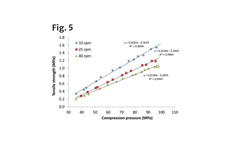Scientific papers
Context:
Mini-tablets, compact dosage forms typically 2–3 mm in diameter, offer potential advantages for paediatric drug delivery. Extended-release (ER) oral dosage forms aim to provide controlled drug release for prolonged therapeutic action. Polymers like hypromellose (HPMC) are commonly used to create ER hydrophilic matrices.
Objective:
Develop ER mini-tablets of various sizes for paediatric delivery and investigate the impact of HPMC concentration, tablet diameter, and drug solubility on the release rate.
Methods:
Determine the solubility of hydrocortisone and theophylline. Formulate mini-tablets (2 and 3 mm) and tablets (4 and 7 mm) containing theophylline or hydrocortisone with HPMC (METHOCEL™ K15M) at different concentrations (30, 40, 50, and 60% w/w). Study the effects of tablet size, HPMC concentration, and drug solubility on release rate and tensile strength.
Results and Discussion:
Increasing HPMC content and tablet diameter significantly reduced the drug release rate from ER mini-tablets. Theophylline-containing tablets and mini-tablets exhibited faster drug dissolution than those with hydrocortisone, highlighting the influence of drug solubility on release from ER matrices. The results suggest that altering polymer content and mini-tablet diameter allows for different drug release profiles and doses, providing dose flexibility to meet paediatric requirements.
Conclusion:
This study demonstrates the feasibility of producing ER mini-tablets to sustain drug release rates, offering dose flexibility for paediatric patients. Tailoring drug release rates can be achieved by adjusting mini-tablet size or HPMC levels without compromising tablet strength.
Comments
No comments posted yet.
Add a comment














